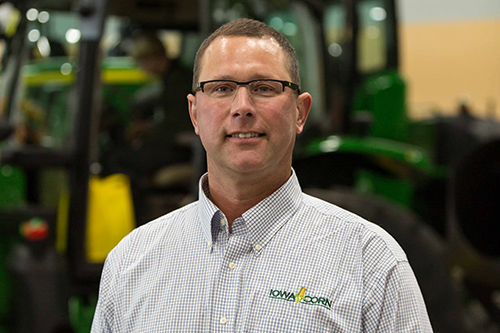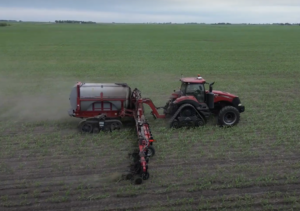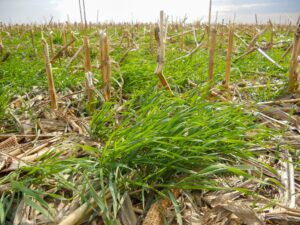By: 4R Plus
March 2020

Stu Swanson has been farming in Wright County for three decades, and 10 years ago he made the decision to fine-tune the nutrient management protocol on his corn, soybean and hog operation. He incorporated the 4Rs of nutrient stewardship – right source, right rate, right time and right place – to maximize the return on investment and maintain a high level of productivity, while also seeing improved environmental benefits.
“I see the symbiosis between animal agriculture and crop production. Livestock has been a part of my family’s legacy for several generations,” Swanson said. “Having an understanding of how they complement each other helps us reach sustainability goals. The livestock utilize the grain that’s produced, and the byproduct of the livestock fertilizes the crop. With crop and livestock production systems working together, efficiencies on the farm have improved and it’s also good for the environment.”
Soil testing on 2½-acre grids and regularly testing manure is at the foundation of rethinking nutrients on Swanson’s farm. Based on the principles of “right rate” and “right source,” every year a quarter of the farmland is tested on a rotating basis and multiple manure samples are taken for an accurate analysis.
“Testing has resulted in lower input costs. I didn’t give full credit to the benefits of manure the first 20 years I farmed,” said Swanson. “An intensive focus on getting the right mix of organic and commercial fertilizers to balance soil fertility has paid off in terms of crop yield and has resulted in an acceleration of soil health gains, which is rewarding.”

In addition to testing, Swanson knew based on the principle of “right time,” it was better for the environment to limit fall anhydrous applications. Most of the nitrogen is applied during the growing season and a stabilizer is added to the little bit that’s applied in the fall.
Through careful evaluation, Swanson moved less productive land into conservation programs, enhancing the return on productive acres. “Conservation on those less productive areas makes more sense than spending money on inputs that hurt the bottom line,” he said.
Because he sees success in the changes that were made over the last 10 years, Swanson is considering additional investments in nutrient management tools. In the future, a Y-drop system will improve upon the principles the crop receives the “right amount” of nitrogen at the “right time.”
Changes he makes to his farming system need to accommodate the weather, which has become less predictable. “The Y-drop system would allow me to make adjustments based on the weather,” he said. “It would give me a lot more flexibility to do early or late side dressing of nitrogen based on conditions – improving the timing of applications.
“I wish I had made the changes I have in place sooner,” Swanson added. “The 4R standards help to make farmers wise stewards of inputs.”



